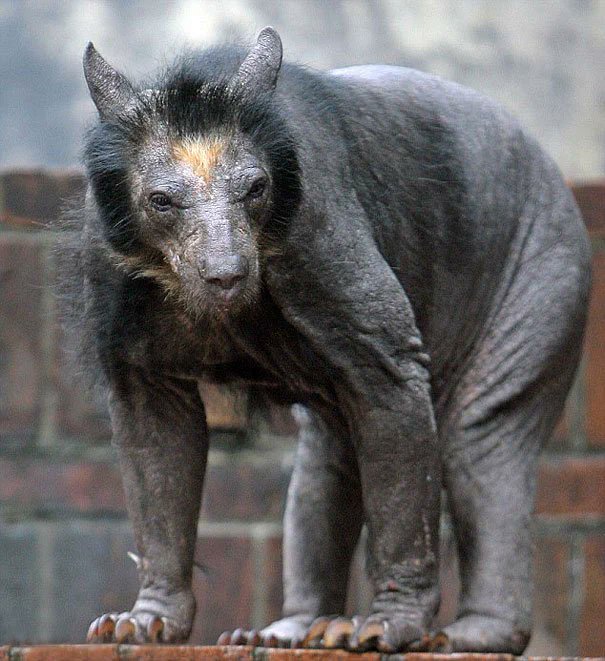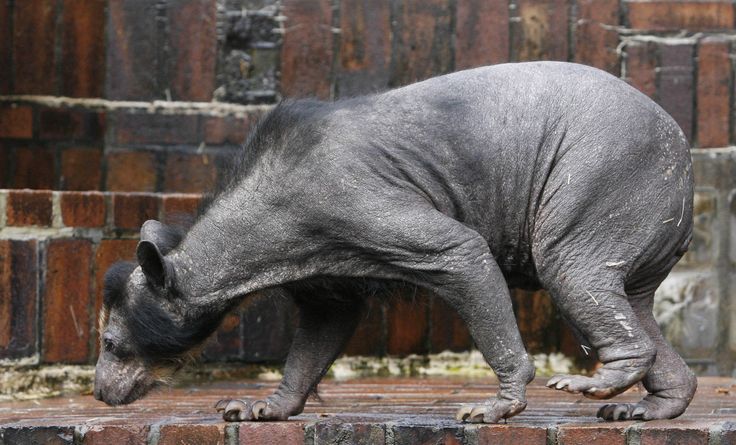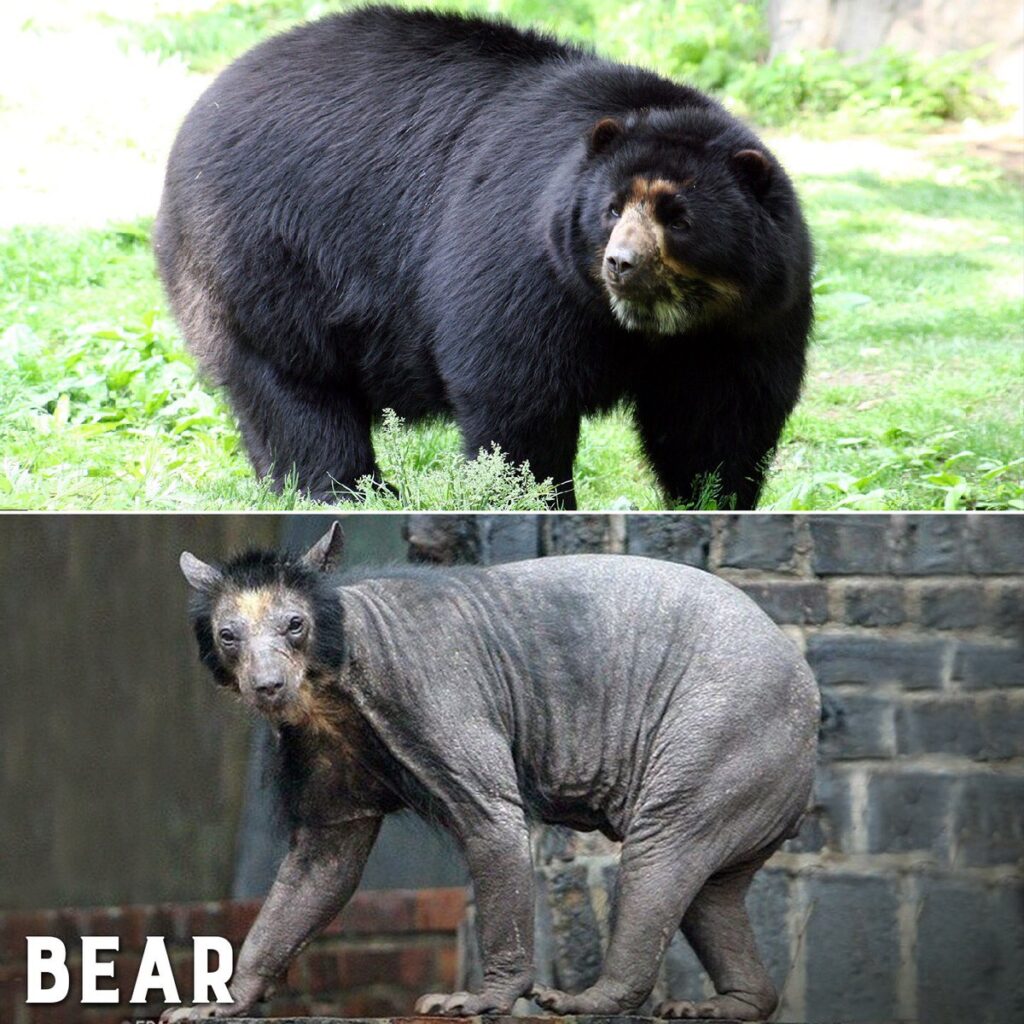
In a peculiar and perplexing conundrum that has left experts scratching their heads, three spectacled bears residing in Leipzig Zoo, located in eastern Germany, have mysteriously lost their fur. While it may seem like a minor issue at first glance, the unexplained baldness of these bears has raised concerns among zookeepers and wildlife specialists alike.
The trio of bears, named Dolores, Bianca, and Lolita, display varying degrees of baldness, with one unfortunate individual being entirely devoid of fur. According to Gerd Noetzhold, the zoo’s curator, the problem extends beyond Leipzig Zoo, with reports of similar fur loss issues cropping up in zoos throughout Europe and even further afield. The puzzling nature of this condition has confounded experts, leaving them in search of answers.

One plausible theory put forward by a wildlife expert is that the bears’ baldness could be attributed to a combination of climate and diet. Spectacled bears, native to the Andean mountains of Ecuador, Peru, and northern Bolivia, have found themselves in a vastly different environment within the confines of European zoos.
Mr. Noetzhold noted that these bears are not only experiencing fur loss but also enduring severe itchiness, prompting zookeepers to apply soothing ointments to alleviate their discomfort. This baffling issue, however, has now caught the attention of an international working group of zoo veterinarians who have been diligently investigating the condition.

Gerard Baars, the director of the International Bear Foundation, expressed his astonishment at the bears’ predicament, emphasizing that he had never encountered such a condition in his extensive experience with these creatures. He suggested that the change in climate and diet may be a significant factor contributing to their fur loss. The bears, originally tropical animals, have been transplanted to a markedly different climate in Europe.
As a possible solution, Mr. Baars recommended that Leipzig Zoo take special measures to accommodate the bears during the upcoming winter months. He proposed creating an artificial tropical environment for the bears, complete with high temperatures, humidity, and suitable bedding, in order to mimic their natural habitat more closely.

Spectacled bears typically exhibit a seasonal pattern influenced by climate, behavior, and food availability, which is challenging to replicate within the confines of a zoo. As Mr. Baars aptly noted, “We in zoos are not very good at imitating natural seasonality.”
As the international working group of experts continues their investigation, the mystery of the bald spectacled bears remains unsolved. Zookeepers and scientists are working tirelessly to provide these unique animals with the care and habitat they need while striving to unlock the secrets behind their sudden and unusual fur loss.

Leave a Reply